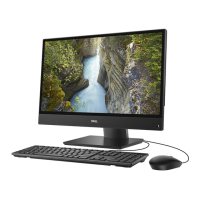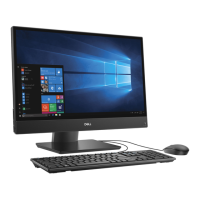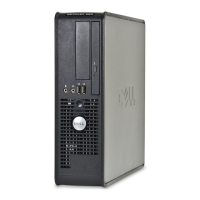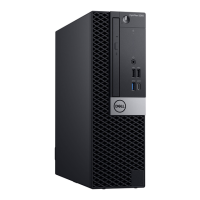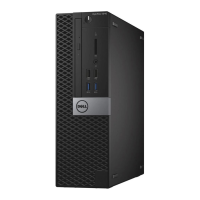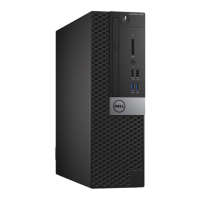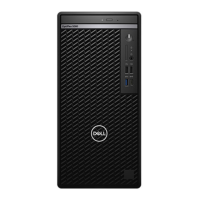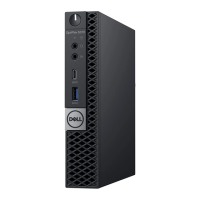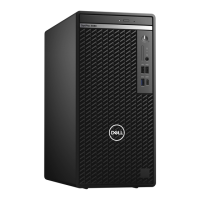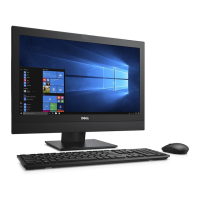
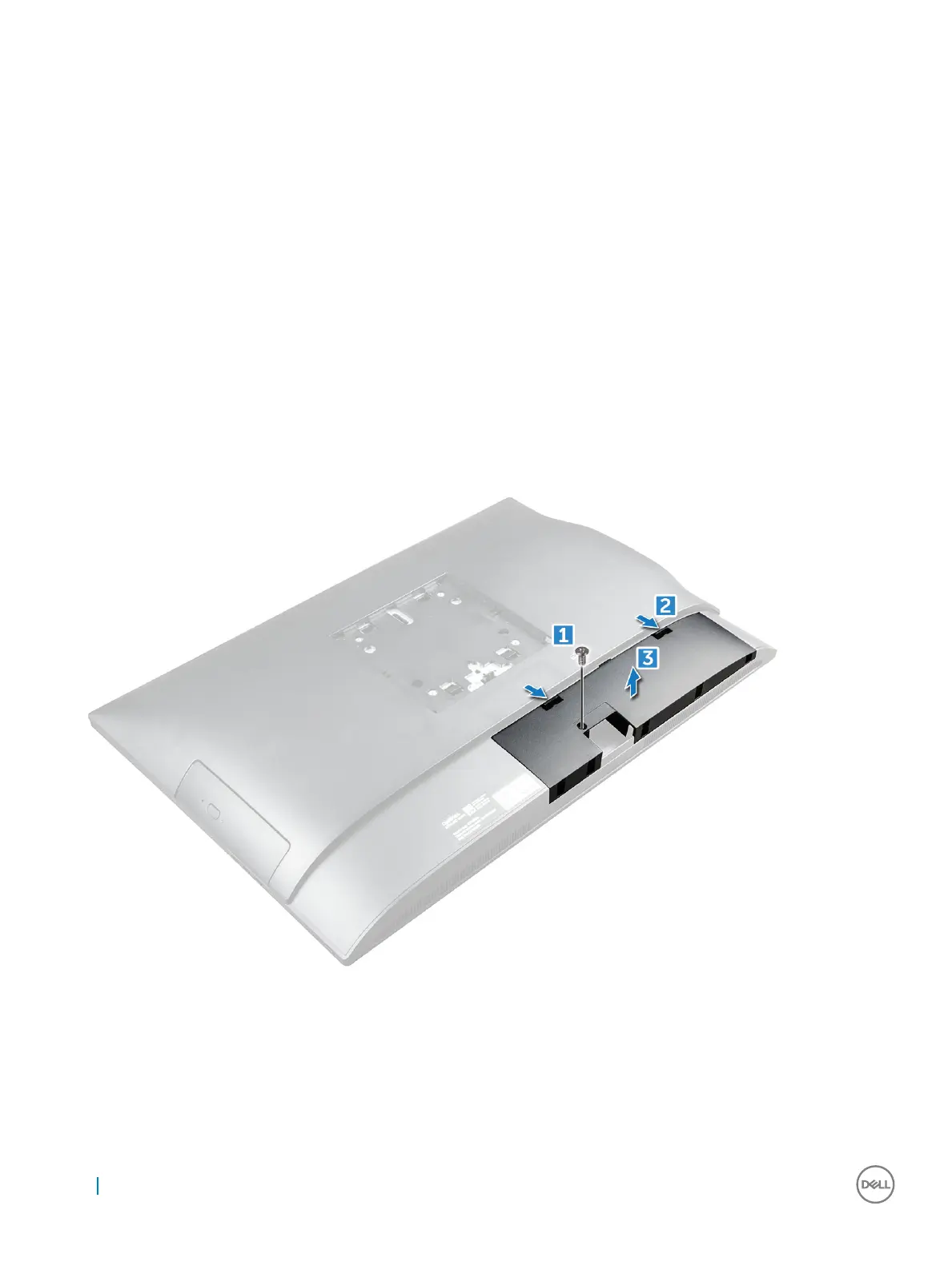 Loading...
Loading...
Do you have a question about the Dell OptiPlex 5250 and is the answer not in the manual?
| Screen shape | Flat |
|---|---|
| LED backlight | Yes |
| Display diagonal | 21.5 \ |
| Tilt angle range | -5 - 30 ° |
| Native aspect ratio | 16:9 |
| Bus type | DMI3 |
| Stepping | B0 |
| Tjunction | 100 °C |
| Processor code | SR335 |
| Processor cache | 6 MB |
| Processor cores | 4 |
| Processor model | i5-7500 |
| System bus rate | 8 GT/s |
| Processor family | Intel® Core™ i5 |
| Processor series | Intel Core i5-7500 Desktop Series |
| Processor socket | LGA 1151 (Socket H4) |
| Processor codename | Kaby Lake |
| Number of QPI links | 0 |
| Processor frequency | 3.4 GHz |
| Processor cache type | Smart Cache |
| Processor lithography | 14 nm |
| Processor manufacturer | Intel |
| PCI Express slots version | 3.0 |
| Processor boost frequency | 3.8 GHz |
| Processor operating modes | 64-bit |
| PCI Express configurations | 1x16, 1x8+2x4, 2x8 |
| Thermal Design Power (TDP) | 65 W |
| Maximum number of PCI Express lanes | 16 |
| Memory types supported by processor | DDR3L-SDRAM, DDR4-SDRAM |
| Memory voltage supported by processor | 1.35 V |
| Memory channels supported by processor | Dual |
| Memory clock speeds supported by processor | 1333, 1600, 2133, 2400 MHz |
| Maximum internal memory supported by processor | 64 GB |
| On-board graphics card ID | 5912 |
| Discrete graphics card model | Not available |
| On-board graphics card model | Intel® HD Graphics 630 |
| On-board graphics card family | Intel® HD Graphics |
| On-board graphics card OpenGL version | 4.4 |
| On-board graphics card base frequency | 350 MHz |
| On-board graphics card DirectX version | 12.0 |
| On-board graphics card dynamic frequency (max) | 1100 MHz |
| Number of displays supported (on-board graphics) | 3 |
| Memory slots | 2 |
| Internal memory | 4 GB |
| Memory slots type | SO-DIMM |
| Memory clock speed | 2400 MHz |
| Memory form factor | DIMM/SO-DIMM |
| Internal memory type | DDR4-SDRAM |
| Maximum internal memory | 32 GB |
| Memory layout (slots x size) | 1 x 4 GB |
| HDD speed | 7200 RPM |
| HDD interface | SATA III |
| Storage media | HDD |
| Optical drive type | DVD±RW |
| Total storage capacity | 500 GB |
| Compatible memory cards | SD |
| Number of storage drives installed | 1 |
| Total megapixels | 2 MP |
| Audio system | Waves MaxxVoice Pro |
| RMS rated power | 7.6 W |
| Speakers manufacturer | Waves |
| Optical drive interface | SATA |
| Product type | All-in-One PC |
| Market positioning | Business |
| Motherboard chipset | Intel® Q270 |
| Placement supported | Vertical |
| Product color | Black |
| Wi-Fi standards | 802.11a, Wi-Fi 5 (802.11ac), 802.11b, 802.11g, Wi-Fi 4 (802.11n) |
| Bluetooth version | 4.2 |
| Ethernet LAN data rates | 10, 100, 1000 Mbit/s |
| Trial software | Microsoft Office |
| Operating system language | Multilingual |
| Operating altitude | 0 - 5000 m |
| Storage temperature (T-T) | -40 - 65 °C |
| Operating temperature (T-T) | 0 - 35 °C |
| Operating relative humidity (H-H) | 20 - 80 % |
| AC adapter frequency | 47/63 Hz |
| AC adapter input voltage | 90 - 264 V |
| USB 2.0 ports quantity | USB 2.0 ports have a data transmission speed of 480 Mbps, and are backwards compatible with USB 1.1 ports. You can connect all kinds of peripheral devices to them. |
| Scalability | 1S |
| Processor ARK ID | 97123 |
| Processor package size | 37.5 x 37.5 mm |
| Supported instruction sets | AVX 2.0, SSE4.1, SSE4.2 |
| Thermal solution specification | PCG 2015C |
| Intel Identity Protection Technology version | 1.00 |
| Sustainability certificates | RoHS, ENERGY STAR |
| Certification | EPEAT, TCO, CEL, WEEE |
| Depth (with stand) | 60.9 mm |
|---|---|
| Width (with stand) | 527.8 mm |
| Height (with stand) | 363 mm |
| Weight (with stand) | 6320 g |
Essential safety guidelines to protect your computer and ensure personal safety during maintenance.
Steps for preparing your workspace and computer before and after performing internal procedures.
List of tools required for performing maintenance procedures on the computer.
Procedures for removing and installing external parts like the stand, cable cover, back cover, and speaker cover.
Steps for replacing storage devices (HDD, Optical Drive, SSD) and memory modules.
Instructions for removing and installing internal hardware like batteries, wireless cards, speakers, and heat sinks.
Procedures for removing and installing critical components such as the processor, system board, power supply, and fans.
Overview of supported processors (Skylake, Kaby Lake) and the system chipset.
Details on storage types (HDD, SSD) and memory specifications, including DDR4 comparison.
How to navigate System Setup, boot options, and general system information settings.
Configuring hardware settings, passwords, and security features within System Setup.
Advanced settings for boot security, performance tuning, power management, and system maintenance.
Using ePSA diagnostics and built-in self-tests (BIST) for hardware troubleshooting.
Methods to invoke the LCD built-in self-test (BIST) using OSD toggle or ePSA.
Detailed specifications for system, memory, video, audio, and communication hardware.
Specifications for cards, displays, drives, ports, power, camera, stand, physical dimensions, and environmental factors.
Information on how to contact Dell support for assistance and resources.
